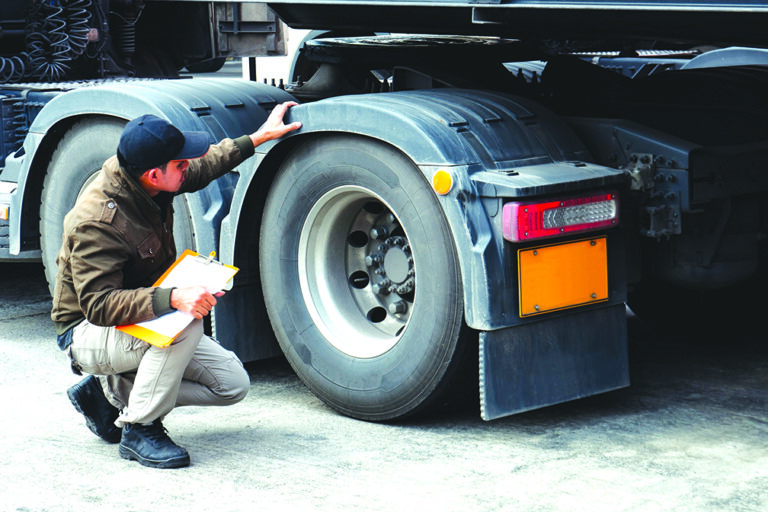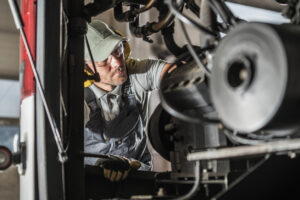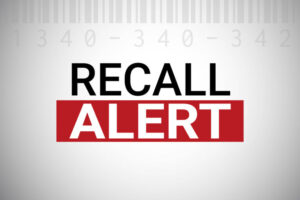One rule of thumb in trucking is that the earlier a problem is identified, the sooner it can be fixed and the less it will cost.
In addition to the most obvious reason to perform a thorough pre-trip inspection — safety — saving some cash also can be a motivator. Damage to a tire’s sidewall, for example, almost always means replacing the tire, which is an expensive proposition on the road. Add to that cost the further expense of a road service call when the tire gives out, plus the probable higher cost of the tire when purchased on the side of the highway (plus repair of any damage done when the tire blew apart), and it’s easy to see why finding and correcting the problem was the right course of action.
To all of that, add the expense of time lost, which also increases exponentially when chance, rather than driver planning, dictates when and where repairs happen. Losing an hour or two at a garage could mean a late delivery. Losing half a day or more waiting for roadside service could mean losing out on the next load and a day of revenue.
As the commercials say, “But wait! There’s more!” Thanks to the Federal Motor Carrier Safety Administration and the CSA (Compliance, Safety, Accountability) and PSP (Pre-employment Screening) programs, if a vehicle inspector finds your problem, even before it blows apart, it’s on your record for the next two years, as well as on the record of the carrier you work for. On the CSA website, individual violations for vehicle inspections are shown, including the plate number. Anyone can see what violations were issued and the severity, although the driver’s name is not included.
On the PSP report, violations are assigned by CDL number. If a citation was issued, even if it was only a warning or a ticket that you beat in court, it can still be on the PSP. Recruiting and safety managers can (and do) review this information in making hiring decisions. Some assign points to each violation, while others have their own systems for determining the severity of each listed item. If, for example, there are repeated violations for inoperable lights or for underinflated or damaged tires, it’s rather obvious that the driver isn’t in the habit of performing a thorough pre-trip inspection every time a shift starts.
The most important reason for a pre-trip, of course, is safety. Every time the truck is started or moved, wear occurs to the parts and components. Everything wears out, eventually. For example, finding a tie-rod bearing that has play in it can mean preventing a serious accident when the part fails. Belts and hoses are made of rubber compounds and will eventually fail. Finding a worn area or a small leak during a pre-trip inspection can save a roadside shutdown with no lights or heat.
The best practice is to conduct an inspection at the beginning of the shift, each day. Some drivers prefer to do a thorough check when they park the truck, followed by a quick walk-around when they finish their rest period. Regardless of the timing, every driver needs a repeatable process for inspecting the vehicle.
Some drivers prefer to get under the hood first, while others start at the driver’s door and circle both tractor and trailer. Find a system that works for you.
When you’re under the hood, check all fluid levels. Modern trucks have sensors that will shut down the truck if coolant or oil levels get too low, and an empty windshield washer reservoir won’t help remove bugs, dirt, salt spray or other debris from the glass.
Check everything made of rubber or silicone. That includes radiator hoses, heater hoses, serpentine belts, turbocharger connect hoses, anything. Look for leaks, fraying, cracking or any form of deterioration. Look over the engine for evidence of oil or fuel leaks, too. A small leak in a gasket can mean big trouble later. Check electrical lines for evidence of corrosion or arcing that could indicate a short. This can be difficult with wiring harnesses wrapped in plastic tubing and tape, but some problems can be visible.
Check steer wheels, inside and out. Make sure the tires have plenty of tread, no cuts or abrasions in the sidewall and are properly inflated. Tire “thumpers” can tell you if a tire is inflated but can’t tell you if it’s under- or over-inflated. Check lug nuts for signs of rust or looseness, and check the entire rim for cracks. These can quickly become bigger, creating a dangerous situation while driving. Check steering components for signs of wear or damage. Some components, such as ball joints, can’t be properly checked until the truck is at a maintenance facility, but you can check parts for play or evidence of improper wear. Check the suspension components, right down to the bolts that hold them to the frame. Check springs or airbags and the hardware that attaches them.
Make sure all lights are working while you’re at the front of the vehicle. As you proceed down the side, aerodynamic wind fairings make it difficult to access items that are attached to the frame, and you may need a flashlight to inspect items like tank straps, air compressor tanks and anything else bolted to the truck. Carefully check the fifth-wheel mounting bolts, slider mechanism and latching jaws. Some rust is fine, but loose or missing bolts are not. Also, don’t forget the air hoses, gladhands, electric pigtail and connections.
As you inspect the drive tires, be sure to look behind and between them so you can verify that there’s no damage to parts that are difficult to see. You’ll need an air-pressure gauge to make sure each tire is properly inflated. Check all suspension parts, rims, lug nuts and anything else that can come unattached. Check rims for cracks, too. Repeat the process for all wheels on tractor and trailer, and check lights as you walk around. Don’t forget the trailer landing gear; make sure all the parts are there and working properly.
This is by no means an all-inclusive list, but it’s a start. By carefully performing a daily pre-trip inspection, you’ll help keep repair and maintenance costs down while keeping your standard of safety more effective.
Cliff Abbott is an experienced commercial vehicle driver and owner-operator who still holds a CDL in his home state of Alabama. In nearly 40 years in trucking, he’s been an instructor and trainer and has managed safety and recruiting operations for several carriers. Having never lost his love of the road, Cliff has written a book and hundreds of songs and has been writing for The Trucker for more than a decade.









